Organic materials contained in intact pottery from the tomb of the royal architect Kha and his wife Merit (18th th dynasty), could be directly analyzed. What better way to identify what these two high-ranking characters had taken on their journey of eternity.
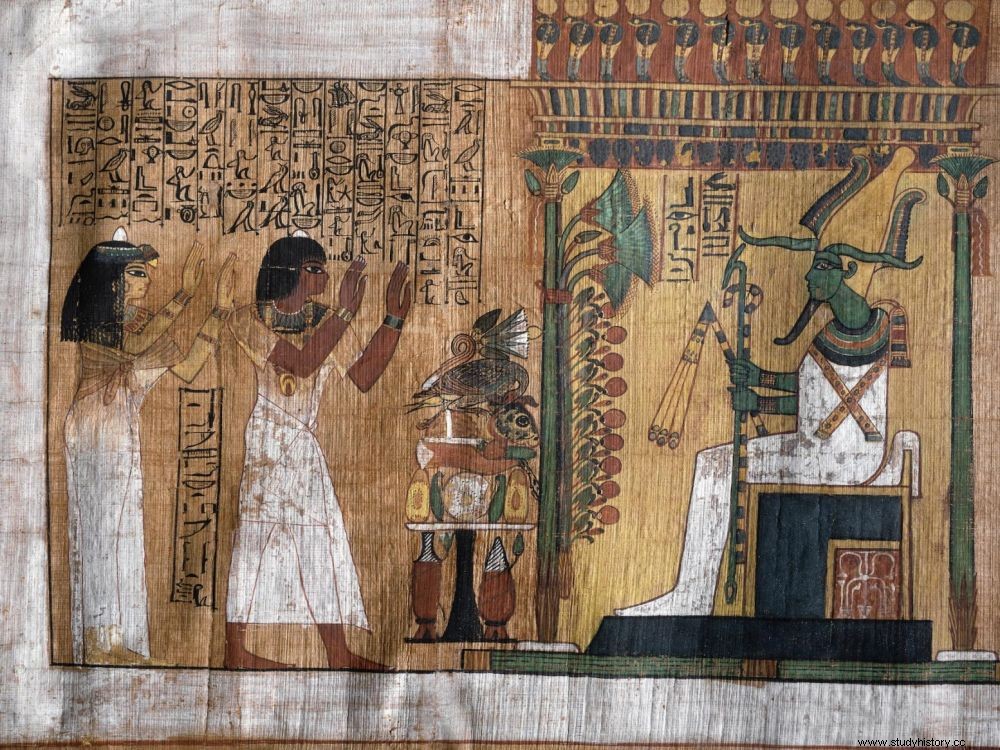
Papyrus of the "Book of the Dead" found in the inviolate tomb of the royal architect Kha and his wife Merit (XVIII th dynasty), discovered in 1906 in the necropolis of Deir el-Medina, near Luxor, Egypt.
 "Archaeology of the invisible" :thousand-year-old Egyptian perfumes revealed by Bernadette Arnaud 00 technology:00 / 00:00 Your browser does not support the
"Archaeology of the invisible" :thousand-year-old Egyptian perfumes revealed by Bernadette Arnaud 00 technology:00 / 00:00 Your browser does not support the audio element. Sealed amphorae, jars, flasks, cups, pottery… Fragrances forgotten for more than 3400 years in ancient containers kept in the collections of the Egyptian Museum in Turin (Italy), have just been resurrected. Directed by Ilaria Degano, chemist at the University of Pisa (Italy), this work, the results of which are published in the Journal of Archaeological Science concern the offerings found in the famous inviolate tomb of the royal architect Kha and his wife Merit, discovered on February 15, 1906, north of the necropolis of Deir el-Medina, on the west bank of Luxor, by the Egyptologist Ernesto Schiaparelli (1856-1928), then director of the Turin museum. Dated from the second half of the 18 e dynasty (1450-1400 BC), the tomb sealed by a landslide, had yielded a treasure considered to be the most complete and best preserved non-royal funerary complex ever encountered in Egypt (see box) .
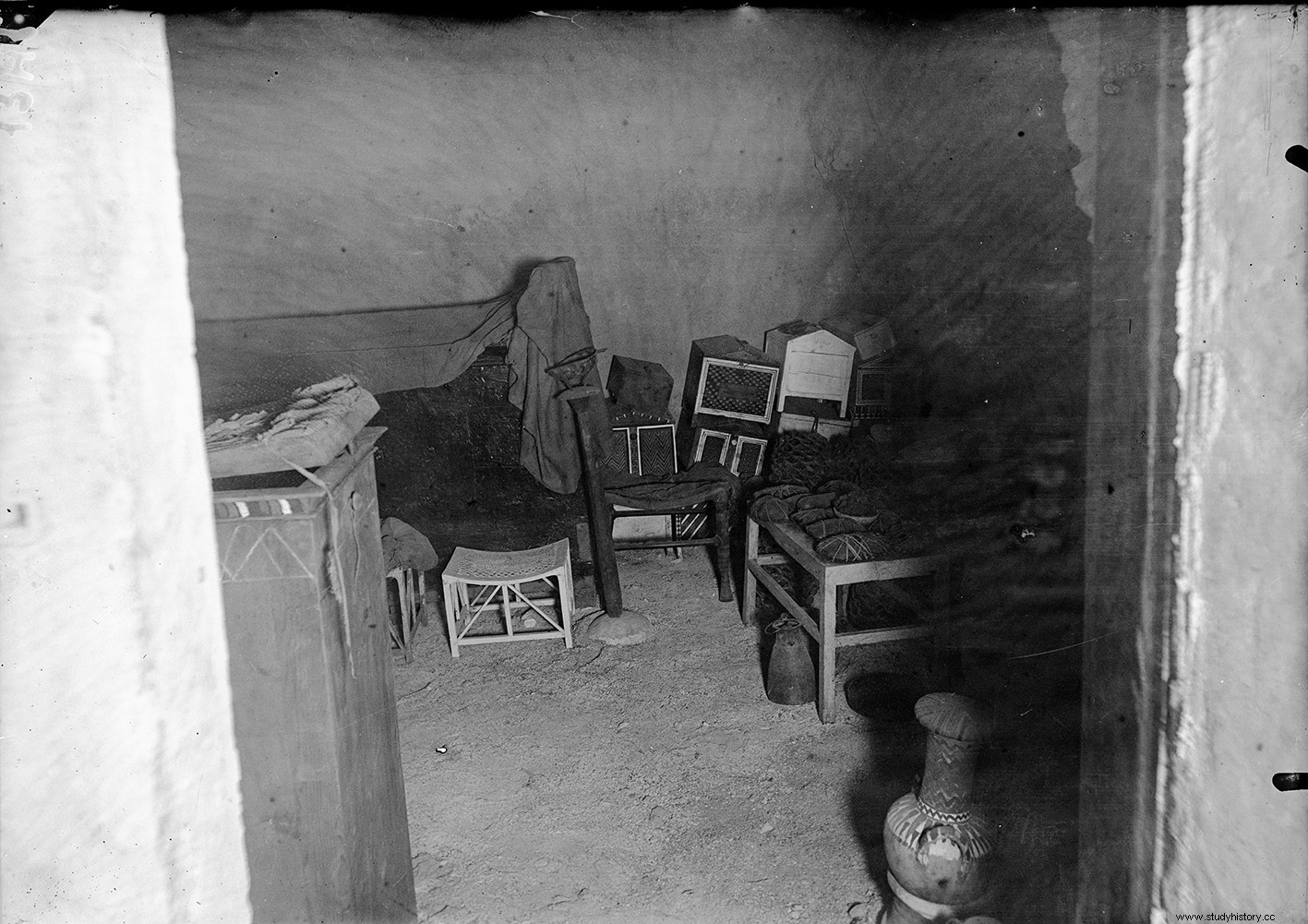
Interior of the inviolate tomb of Kha and Merit, at the time of its discovery on February 15, 1906. ©The Museo Egizio
A mission nicely nicknamed "archeology of the invisible"
More than 440 objects had since their exhumation been transferred to the Egyptian Museum of Turin - the second largest collection of Egyptian antiquities after that of the Cairo Museum (Egypt). Among them were many vessels preserved intact to the present day. For this reason, a team made up of chemists and archaeologists wanted to analyze their content during non-invasive work. Carried out during two campaigns between July and November 2019, these samples were taken as part of a research project launched in 2017 entitled Project TT8, in reference to the numbering of the tomb of Kha and Merit.
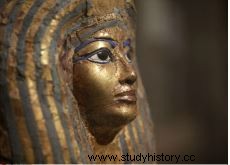
One of the sarcophagi of Merit, the wife of the royal architect Kha. ©Antonio Calanni/AP/Sipa
For this mission nicely dubbed "archeology of the invisible", Ilaria Degano and his colleagues managed to detect and distinguish the remains of organic matter contained in 46 containers using a transportable mass spectrometer. A key tool used in recent years to characterize in real time the organic compounds preserved in traces in archaeological objects without ever altering them or attacking their integrity.
"A week before each campaign, pottery was isolated in hermetically sealed inert plastic bags, without removing them from the showcases" , explains Ilaria Degano. Then, the samples of released volatile molecules could be measured directly inside the bags using the mass spectrometer, thus allowing the identification of the components and the nature of the preserved products. "These results were beyond our expectations, because I was very concerned that most of these materials were so degraded that they did not provide results. But that did not happen, and many samples had clearly identifiable content!" , Ilaria Delgado enthusiastically told Sciences et Avenir .
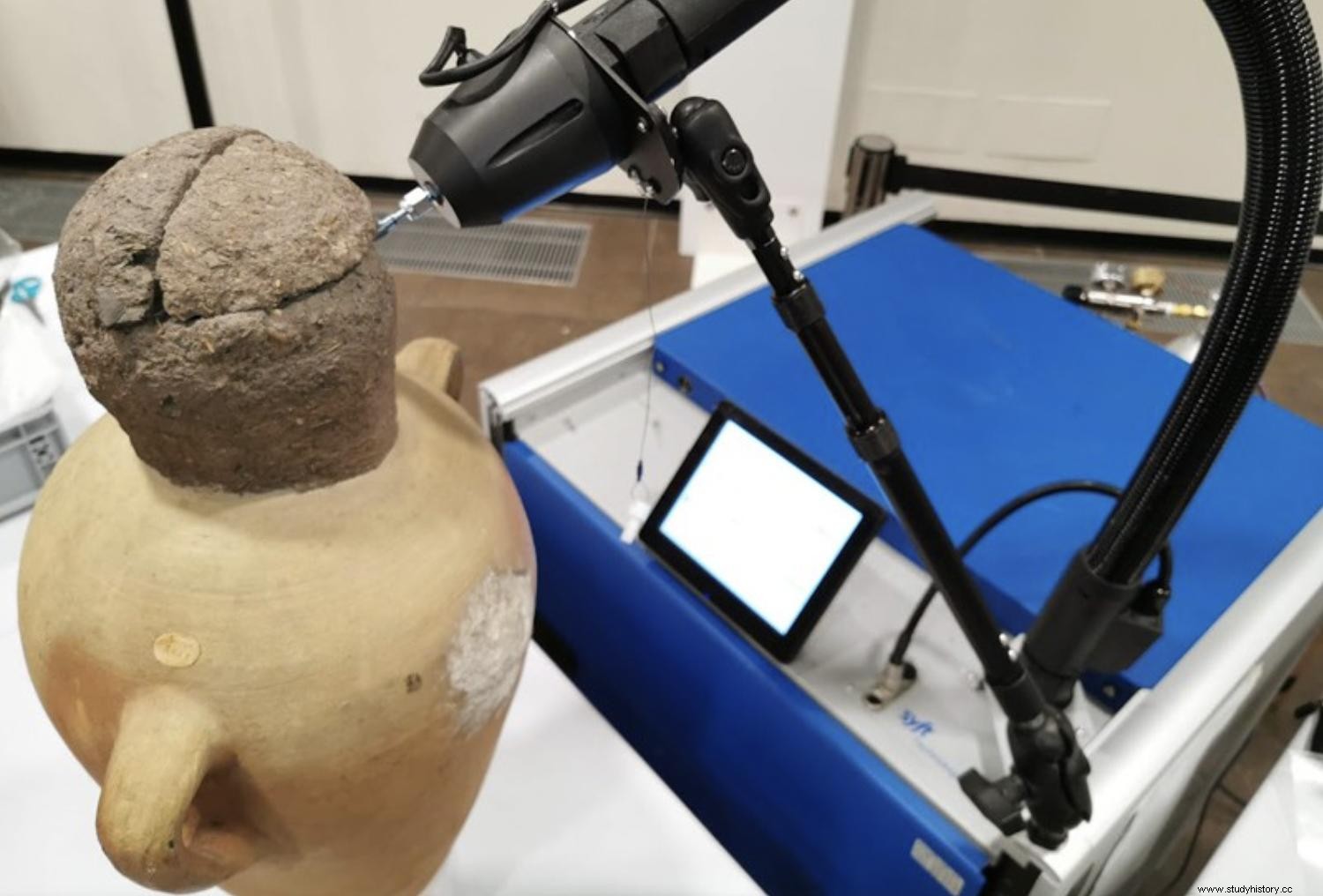
One of the jars from tomb TT8 analyzed using a mass spectrometer. © J. NASA et al. / J. Archeol. SCI
Fish, beeswax and natural resins
In some cases, what these analyzes have revealed are elevated amounts of dried fish-specific trimethylamine and dimethylnitrosomine. "Results consistent with the importance given to fish in their diet by the ancient Egyptians. In particular those of the genus Tilapia (Cichlidae), considered a symbol of rebirth", explain the signatories of the article. Similarly, in a jar, remains of barley flour could be characterized. A highly prized commodity in ancient Egyptian trading systems, but also an ingredient used for brewing beer. Bread and beer were indeed often present in the middle of the funeral offerings. Also among the results are aromatic resin of the genus Styrax , as well as beeswax and oils, collected in amphoras. It seems that in ancient Egypt, honey was widely used along with beeswax as a preservative. The same molecular markers of beeswax have thus been identified in small alabaster basins. Remnants of ingredients used to produce hair ointments as reported by the 1 st Greek physician century CE Dioscorides, which "describes mixtures of pork or goose fat and beeswax as a surfactant in cosmetic formulas" . Objects studied also included a group of seven vessels possibly related to the "seven sacred oils". Oils used during ritual ceremonies in temples, or during mummifications. These results which are only at their beginning must feed a larger project on the study of the totality of the funerary contents of the tomb TT8 of Kha and Merit, of which this publication seems only a first part.
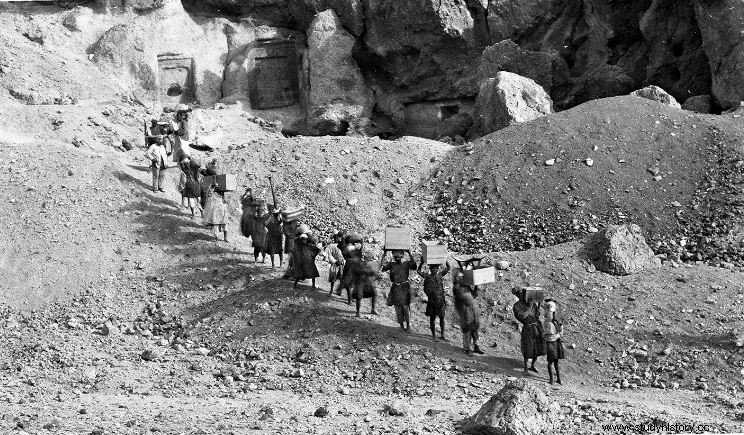
The evacuation of treasures from the tomb of Kha and Merit by Ernesto Schiaparelli's teams, in 1906. ©F. Ballerini /The Museo Egizio
Tomb of Kha and Merit
In 1906, the intact burial, still sealed and containing the wooden coffins of the royal architect Kha and his wife Merit - who lived during the reign of Pharaoh Amenhotep II - was uncovered. "All of the burial equipment was perfectly ordered and positioned. The main elements were covered with a dust that had solidified. The floor had been carefully swept by the last to leave the place. wooden papyrus column supporting a copper alloy saucer still contained the ashes of its last flames… The tomb and its contents reflected the personal wealth of the owners, their special position within society and the story of their lives. suggested the vision of a prosperous 18th Dynasty house, as if 'packaged' for reuse in the afterlife", according to the descriptions of its discoverer Ernesto Schiaparelli. In addition to the coffins of Merit, and those of Kha, the tomb yielded countless objects including a papyrus from the Book of the Dead more than 13 meters long, armchairs, beds, clothing, instruments and work tools, toilet boxes, household linen, and even a wig. As well as large quantities of food and jars containing liquids. The very ones whose olfactory vestiges have just been identified.
